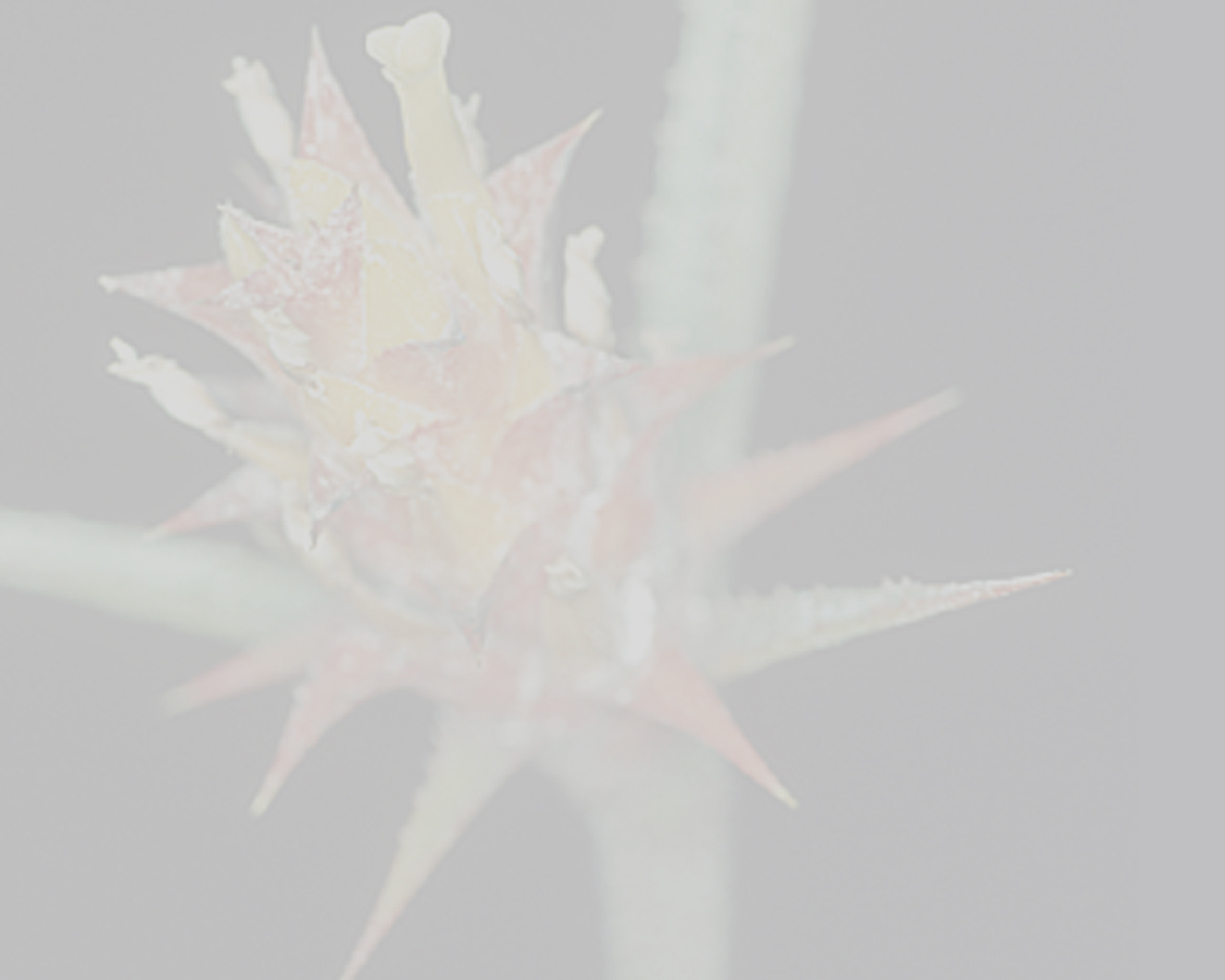Acanthostachys pitcairnioides (Mez) Rauh & Barthlott
Literature references:
*move your mouse pointer over the page numbers to see comment
Comments:
- Adding to the knowledge of the genus Acanthostachys KLOTZSCH with description of a second remarkable species–by Rauh & Barthlott in Trop. Subtrop. Plant. 39:5-34. 1982
On his autumn 1981 trip into the dry-areas of Brazil, Rauh visited Domingos Martins, Espirito Santo, and Roberto Kautsky, who in recent years has become known for new findings of numerous orchids – and Bromeliaceae. Several Bromeliads and orchids have been named after him. On a tree near a waterfall in his „garden ", a quite large area, half nature-like forest, that extends upwards on the flanks of a mountain about 1,000 m high and with a variety of native plants, R Kautsky discovered recently a remarkable Bromeliad with notably narrow, sedge-like leaves , glabrous, upper side narrow grooved, shiny, the edges strongly spined and an almost sessile inflorescence, deeply sunk into the leaf-rosette ( abb. 2; abb. 4). Rauh took a piece of this plant with a young inflorescence and a berry, and in the Botanical garden at the University of Heidelberg developed first a shiny blue flower, that reminded at first strongly of a Neoregelia. We believed we had discovered a new, previously unnamed Bromeliad with the habit - a nestling inflorescence with blue flowers – which suggested it was close to the well known Acanthostachys strobilacea.
The Bromeliad specialist Dr. L. B. SMITH of the Smithsonian Institution, Washington, with whom we have had close cooperation for many years, alerted us to the fact that our plant had already been described by Mez (in DC. Monogr. Phaner. IX, 258, 1896, as Aechmea pitcairnioides Mez. It was discovered by the collector Blanchet in the State of Bahia and doesn't seem been found again since then, because L. B. SMITH writes in his Bromeliad Monograph, (1979, p.1908) “Known from the type collection only ". The holotype, Blanchet, s. n., is in the herbarium of „Conservatoire et Jardin Botanique ", Geneva.
The comparison of the same (abb 2, left), with our plant confirms the identity with the plant collected in Domingos Martins. However, it seems to be an extremely weak copy of the type,(abb. 2, left) because our plant is essentially more robust. Also, the type shows no fully developed flowers, and in the diagnosis no statements were made about the form of the flower or the petal colour.
Since our plant, whose uninterrupted development we could study from the germination up to the fruit - and seed-formation, now differs from all known Aechmea in essential characteristics, but shows a very strong and remarkable affinity to Acanthostachys strobilacea (Schultes fil.) Klotzsch, a single species in a monotypic genus. After discussion with L B Smith it was decided to take Aechmea pitcairnioides from the genus Aechmea and assign it to Acanthostachys as second species of the genus. The genus Aechmea according to L. B. Smith is a genus with very heterogeneous species and needs urgent revision. L. B. SMITH (1979, p. 1768) wrote: “Aechmea includes some very discordant elements and is very likely of polyphyletic origin. Further research is likely to divide it with some parts becoming independent genera and others merging with genera at present considered distinct."
Before we substantiate our combination, there is hardly a Bromeliad collection without Acanthostachys strobilacea. It was described in 1830 by Schultes f. as Hohenbergia strobilacea, then transferred by Klotzsch (1841) into the genus Acanthostachys, at that time monotypic. Acanthostachys ananassoides Baker (in Handb. Bromel. 1889) remained known until L. B. Smith (Bot. Mus. Leafl. Harvard 1939) moved it to the genus Ananas, just as Acanthostachys exilis Bertoni,( in An. Cient. Parag., 1919), was treated as a synonym of Acanthostachys strobilacea.
; —See Rauh 1973-1991

